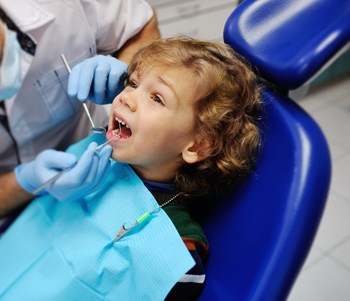What Types of Teeth Fillings Are Available for Kids with Cavities?
If you are a parent, you know the horrible feeling you get when you’re told that your child has any health-related issue, including cavities. Even if your kids brush their teeth twice a day like they are supposed to and is diligent about flossing to keep their teeth healthy, there is still a chance that a cavity can develop in one of their teeth which can result in an infection in the gums of your child’s mouth. That is dangerous not only for their teeth but for their overall health and well-being. The best way to prevent that is to take care of the cavities with dental fillings. Dr. Sona J. Isharani provides treatment for kids with teeth cavities in Greensboro, NC, and the surrounding areas.
Below is a detailed list of the five types of dental fillings that can be used for children to help you out with your decision.

Amalgam Fillings
Amalgam fillings are the classic ones that have been around for years and look like they are silver. They are created from a combination of copper, silver, mercury, and tin and have been used for more than 150 years. Dentists appreciate them because they are strong, durable, and will last a long time. The downside is that they darken over time and can be very noticeable, so if you want something for your child that is less noticeable, you will want to go with white fillings.
Gold Fillings
Much like silver fillings, gold fillings are not made from pure gold, but they are very long-lasting and are very strong. The drawback is that they are costly.
Composite Fillings
Composite dental fillings are created from a mixture of acrylic resin and powdered glass. These fillings can be colored to match the color of your child’s teeth, which makes them an attractive choice among both kids and their parents.
Even if your child still has their baby teeth, it is still essential to fill cavities so that the adult teeth in their gums will not be adversely affected. At Triad Pediatric Dentistry in Greensboro, NC, white fillings are offered for children. Dr. Sona uses a composite resin that is non-toxic, so it is very safe for your child. It is applied directly to the tooth affected by the cavity, then shaped and allowed to harden in place. The resin used conforms more accessible to the tooth than metal fillings do, so your child will not have to undergo as much drilling or tooth preparation before the filling is placed in their mouth. In other words, you can handle everything in just one appointment, which makes it a more straightforward process for children.
Ceramic Fillings
Ceramic fillings are created mainly by using porcelain and can be designed to match the color of your child’s teeth. They are more brittle than composite fillings and are expensive, but they are also stain-resistant, making them another viable option for your child’s mouth.
Glass Ionomer Fillings
Glass ionomer fillings, also known as resin fillings, are constructed using acrylic and fluoro aluminosilicate, a glass component. This type of filling is often used for fillings in children’s front teeth or if the tooth’s root has decayed.
To have all of your questions about children’s fillings answered and get the process started of protecting your child’s teeth, call the team at Triad Pediatric Dentistry in Greensboro, NC, today at (336) 804-8668 to schedule an appointment with Dr. Sona Isharani.
Back to White Fillings Page





